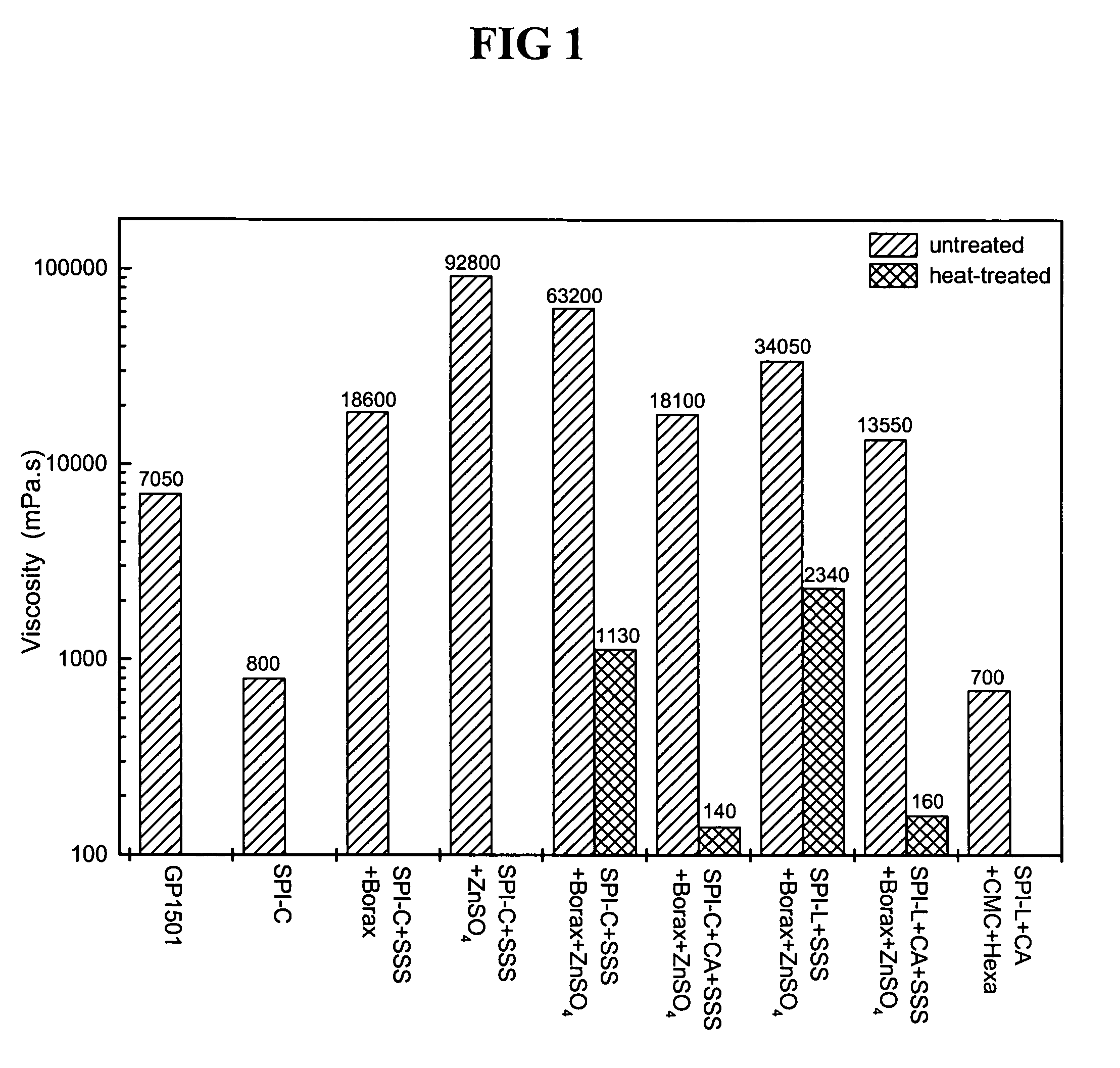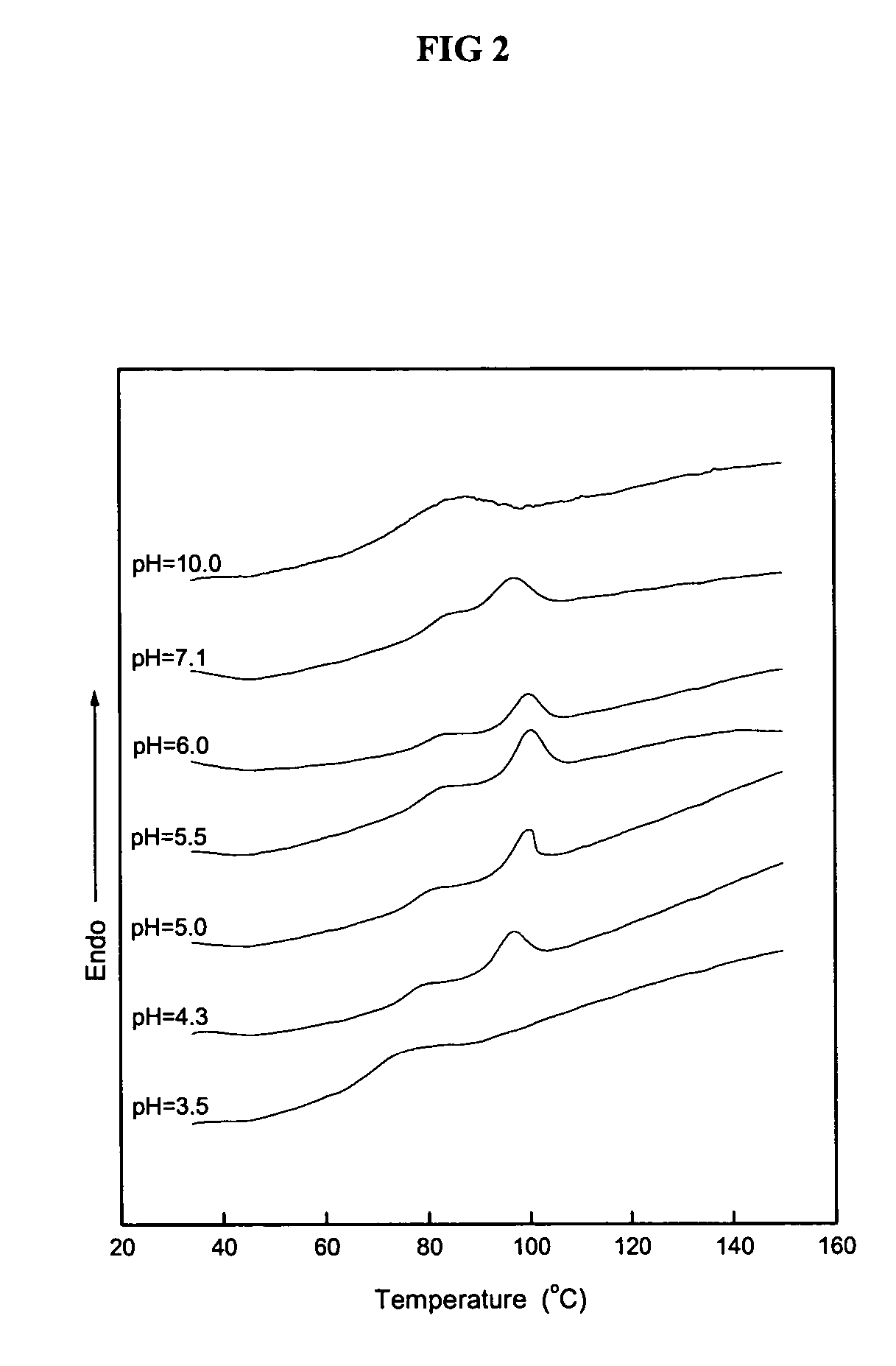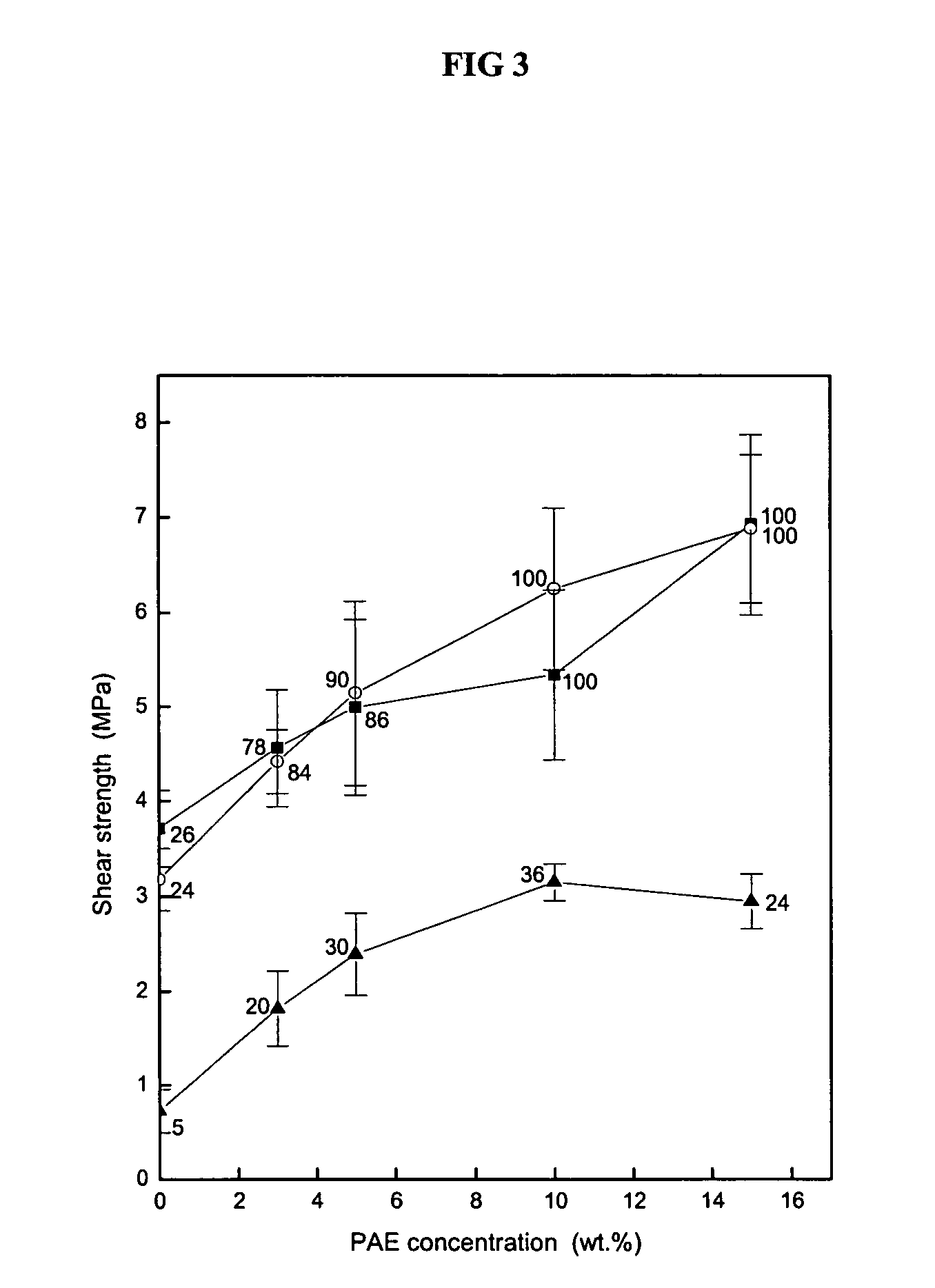Adhesives from modified soy protein
a technology of modified soy protein and adhesive, which is applied in the field of adhesives to achieve the effects of low water solubility, easy finding or determination, and profound effect on the adhesive and water resistance properties of the composition
- Summary
- Abstract
- Description
- Claims
- Application Information
AI Technical Summary
Benefits of technology
Problems solved by technology
Method used
Image
Examples
example 1
[0027]This Example compared the adhesive properties and strengths of soy protein adhesives modified with sodium silicate solution, hexamethylenetetramine, zinc sulfate, sodium borate, and combinations of these modifiers.
Materials, Methods, and Results
[0028]Twenty adhesive samples were created in the following manner. 3.6 grams of soy protein isolate (“SPI”) provided by Archer Daniels Midland (PRO-Fam 970, Decatur, Ill.) was suspended in 30 g distilled water and stirred until a homogeneous, lump-free slurry was obtained. The SPI solid concentration was about 12% unless otherwise noted. After obtaining the slurry, Sample A was unmodified. Sample B was modified by adding a sodium silicate solution comprising 14% NaOH and 27% SiO2 (“SSS”) to the slurry until it was 5% of the solution as compared to the solid weight of the SPI. Sample C was modified by adding 5% SSS and 5% hexamethylenetetramine (“hexa”) to the slurry. Sample D was modified by adding 5% SSS and 5% zinc sulfate (ZnSO4.7H2...
example 2
[0044]This Example tested the effects of viscosity-modifying ingredients on adhesives in accordance with the present invention.
Material, Methods, and Results
[0045]Three adhesive samples were prepared using the method described in Example 1. Sample A was a soy protein isolate modified with 5% SSS, 3% sodium borate, 5% hexa, 2% sodium chloride (“NaCl”), and 5% ZnSO4. Sample B was a soy protein isolate modified with 5% SSS, 3% sodium borate, 5% hexa, 1% methacrylic anhydride (“MAA”), and 5% ZnSO4. Sample C was a soy protein isolate modified with 5% SSS, 3% sodium borate, 5% hexa, 1% citric acid monohydrate (“citric acid”), and 5% ZnSO4. The wood specimens were prepared and tested in accordance with the methods of Example 1.
[0046]The results can be seen in Table 5, below.
[0047]
TABLE 5Shear StrengthSampleUnsoaked SampleSoaked SampleWet StrengthA5.9 ± 0.335.2 ± 0.451.9 ± 0.73CFW: 95 CFW: 100CFW: 30B4.2 ± 0.223.9 ± 0.192.4 ± 0.27CFW: 42CFW: 87CFW: 19C5.1 ± 0.414.8 ± 0.222.4 ± 0.10 CFW: 100...
example 3
[0049]This Example determined the effects of zinc sulfate application onto adhesives in accordance with the present invention.
Materials, Methods, and Results
[0050]A modified adhesive was prepared using the method of Example 1 using soy protein isolate modified with 5% SSS, 3% sodium borate, and 5% hexa. Three wood specimens were prepared using the Veneer cherry wood. Specimen A was prepared by applying the adhesive to one piece of a wood sample and 5% zinc sulfate solution to a second piece of a wood sample. The two samples were placed together after 15 minutes, and then pressed at 130° C. and 1.4 MPa for 5 minutes. Specimen B was prepared by applying the adhesive to two wood samples. After 15 minutes, zinc sulfate was sprayed onto one of the wood samples. The two samples were then assembled and pressed at 130° C. and 1.4 MPa for 5 minutes. Specimen C was prepared by applying the adhesive to two wood samples. After 15 minutes, zinc sulfate was sprayed onto both of the wood samples. ...
PUM
| Property | Measurement | Unit |
|---|---|---|
| pH | aaaaa | aaaaa |
| pH | aaaaa | aaaaa |
| pH | aaaaa | aaaaa |
Abstract
Description
Claims
Application Information
 Login to View More
Login to View More - R&D
- Intellectual Property
- Life Sciences
- Materials
- Tech Scout
- Unparalleled Data Quality
- Higher Quality Content
- 60% Fewer Hallucinations
Browse by: Latest US Patents, China's latest patents, Technical Efficacy Thesaurus, Application Domain, Technology Topic, Popular Technical Reports.
© 2025 PatSnap. All rights reserved.Legal|Privacy policy|Modern Slavery Act Transparency Statement|Sitemap|About US| Contact US: help@patsnap.com



